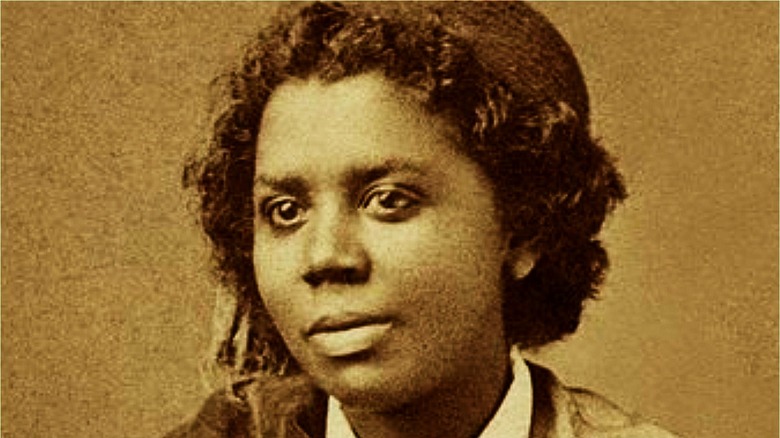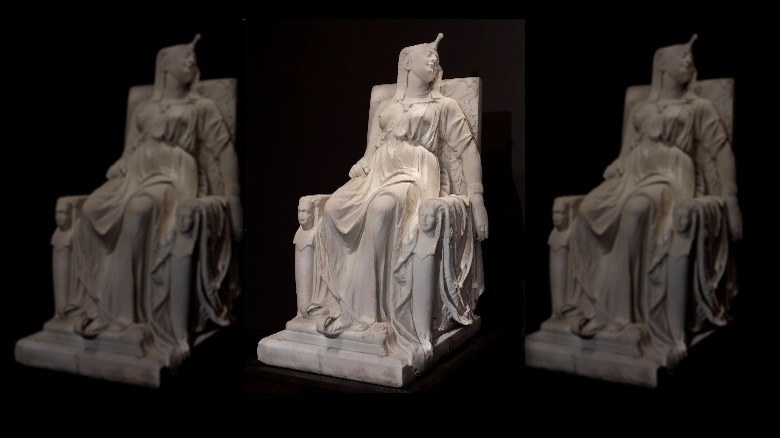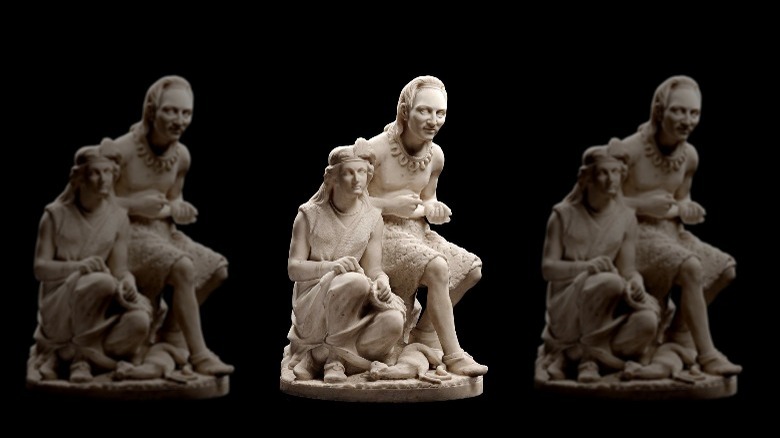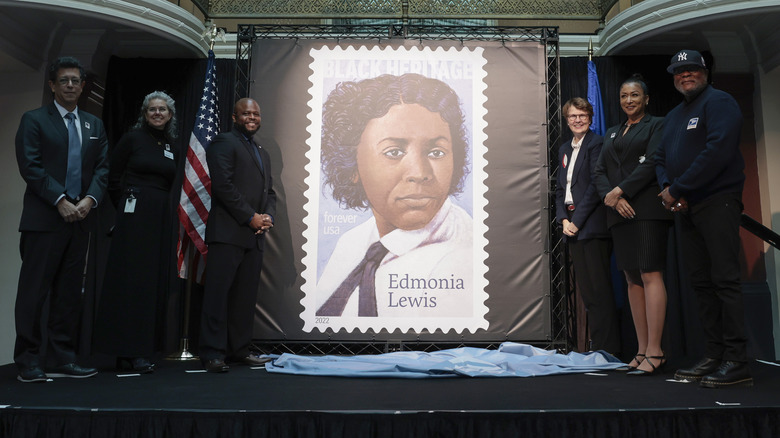How Edmonia Lewis Was Essentially Erased From History
Many are likely unfamiliar with the name Edmonia Lewis, though her talent was great and her story well worth telling. She was a 19th-century American artist of Haitian and Chippewa descent. Not only did she dare chase a life in art, but her chosen medium was one that was typically associated with men — sculpture.
"It was very much a man's world," Smithsonian American Art Museum curator Karen Lemmey told Smithsonian Magazine. The artist, she explains, "really broke through every obstacle, and there's still remarkably little known about her."
Lewis' birth name was Wildfire and, like a wildfire, she burned brightly. Her work pushed boundaries and she was known as a bit eccentric who sometimes courted controversy. Lewis has made a lasting impact as the first internationally known woman sculptor of African American and Native American heritage.
Lewis paved a path for female artists and did so with beautiful talent, strength, and determination. However, the stories she told of her life often didn't add up (via Repaint History). This, along with inconsistent chronicles and poor documentation, may have contributed to her near erasure from history.
Still, she persevered
Edmonia Lewis was no stranger to controversy. In 1862, while studying at Oberlin College, she was accused of poisoning two white college students and was subsequently attacked. She was eventually cleared of the crime, but was later accused of theft and kicked out of school, per The New York Times.
These tragedies didn't stop Edmonia Lewis from gaining success as an artist in her time, though much adversity stood in her way — even the study of anatomy was still reserved for male sculptors in her day (via Smithsonian). Her popular clay medallions of prominent abolitionists eventually earned her enough to travel to Rome where she created one of her most important works, "The Death of Cleopatra." This piece was groundbreaking for it didn't mimic tenderhearted portrayals of death, typical of the era, but was raw and realistic (via The Archive). Some raved and others balked at the statue, but Lewis' talent was hard to dismiss.
Despite her questionable reputation or perhaps, because of it, Lewis was popular with journalists. But their focus was, more often than not, on her race and gender. In 1866, the San Francisco Chronicle wrote, "A black sculptress is rarer than a black swan" (via The New York Times). This bothered her greatly.
"She rejected wholesale the idea of herself as a victim, glossing over unpleasantness so that her experiences were more consistent with those of other internationally renowned artists," art history professor and Lewis biographer Kirsten Pai Buick told The New York Times.
Edmonia Lewis died in obscurity
Unfortunately, many of Edmonia Lewis' sculptures were not cared for and the brilliant artist was nearly erased from history. "The Death of Cleopatra," for example, was eventually sold to a gambler in Chicago and given the odd fate of a tombstone where it rested on the grave of a racehorse who was called Cleopatra (via Repaint History). Eventually found abandoned in a shopping mall, the masterpiece didn't initially receive the preservation and care it deserved — much like Lewis' memory. This could likely be due to the fact that she herself, not unlike her honest telling of Cleopatra's death, was on the controversial side.
Lewis died in obscurity and the events of the end of her life are unconfirmed (via Repaint History). It wasn't until 2011 that cultural historian Marilyn Richardson unraveled a piece of the enigma around Lewis' death date (via Art Fix Daily) — she died in London's Hammersmith Borough Infirmary in 1907.
Here's where you can see her work today
Thanks to devoted historians, some of Edmonia Lewis' pieces have been restored and are now on display, and she is starting to gain some much-overdue recognition for her work. These sculptures are important pieces of history and, if you're an art museum lover, you should get ready to book a flight to see some of her work in person.
Two of her marble sculptures, Minnehaha and Hiawatha, are on display at The Metropolitan Museum of Art. They were inspired by Henry Wadsworth Longfellow's epic poem, "The Song of Hiawatha," written in 1855. At The Howard University Gallery of Art, you can gaze upon one of Lewis' most powerful works, "Forever Free." The statue is one of celebration, showing two slaves liberated by the Emancipation Proclamation. In February 2017, Lewis was featured in a Google Doodle, where she was depicted sculpting "The Death of Cleopatra."
As for "The Death of Cleopatra," it now peacefully resides at the Smithsonian American Art Museum.



